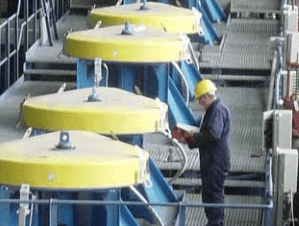 Let me sum this up in two or three sentences. Start solving a problem at the effect. Reduce the effect as much as possible when it is losing money or making a mess. Check all of your mechanical and operational variables to discover the cause. You know what the equipment and process is supposed to do, you also know how it is done. By following the process through you will discover where the problem originates. Once the cause is discovered the answer will be self-evident. Either the operator or the foremen will know how to solve it.
Let me sum this up in two or three sentences. Start solving a problem at the effect. Reduce the effect as much as possible when it is losing money or making a mess. Check all of your mechanical and operational variables to discover the cause. You know what the equipment and process is supposed to do, you also know how it is done. By following the process through you will discover where the problem originates. Once the cause is discovered the answer will be self-evident. Either the operator or the foremen will know how to solve it.
There are a couple of rules that I suggest that you follow however, TREAT THE CAUSE NOT THE EFFECT. In some operational problems it is easy to limit the effect to the point that the problem is no longer evident. It is still there, unfortunately, so is the effect. Both will then go unnoticed and losses will occur. VERIFY NEVER ASSUME. This will save a lot of frustration and embarrassment. Assuming will lead to simple causes being over looked and equipment shut down needlessly.
The first indication of a problem is called an EFFECT. This is what the problem caused. It may be an overflowing pump box or a high percentage of mineral in the tails. The effect is usually what will draw attention to the problem. If the effect is negative, as they usually are, I either eliminate it or reduce it as much as possible. While I am doing this, I observe the effect to try and determine where the CAUSE of the problem originates. If the cause isn’t apparent then I begin to check the HISTORICAL PROBLEMS. These are the problems that crop up regularly, and produce the type of effect that is evident. If it is none of these, I then follow the circuit through checking everything. I know how the equipment and processes work. I also know what they are supposed to do. A problem has to be one of the components not working the way it was designed too.
